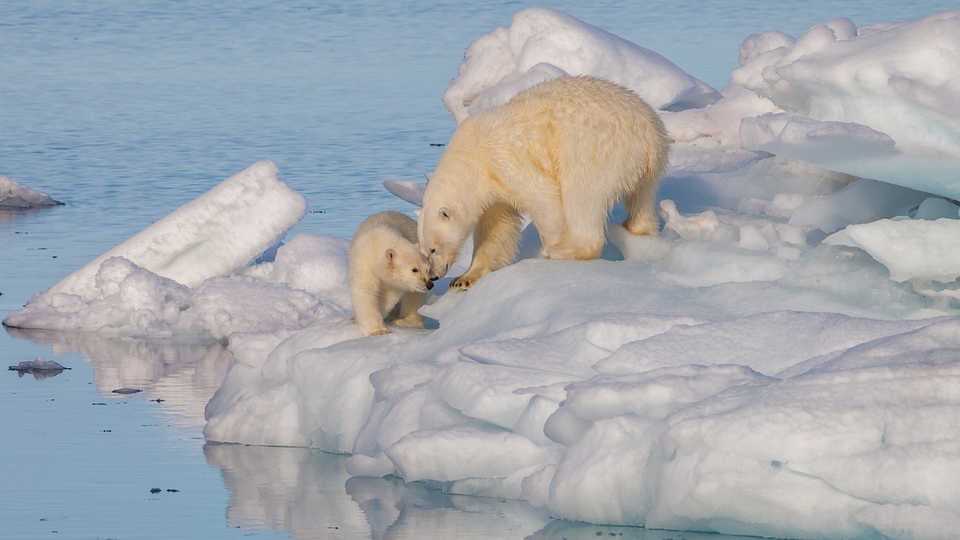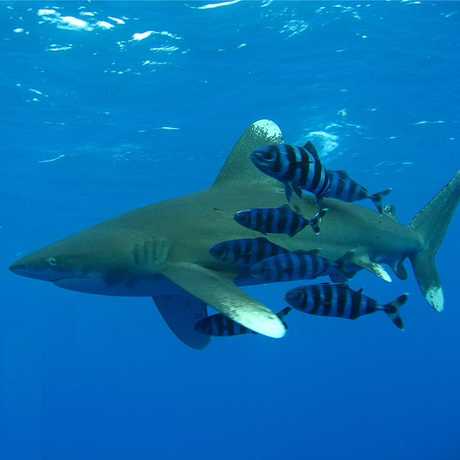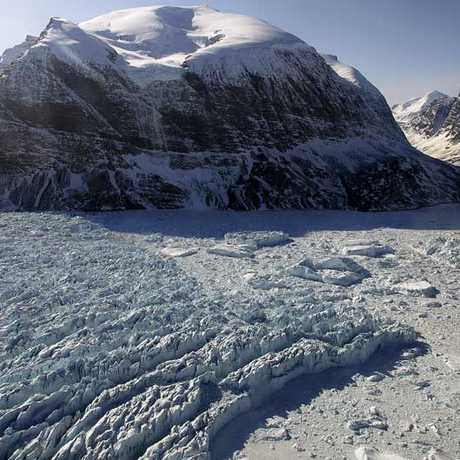Science News
Satellite Studies: Wildlife in a Warming World

How can satellites help biologists understand animals’ response to climate change? In a press conference Monday morning at the annual American Geophysical Union (AGU) meeting in San Francisco, three scientists described the tools NASA satellites are providing to track polar bears, wild reindeer and mountain lions in a warming world.
For polar bears, Kristin Laidre and colleagues used sea ice satellite data to understand how polar bears will fare as ice coverage declines over the next 35 to 40 years. The scientists correlated those measurements with the average age of reproducing females—11.5 years—to understand how future generations will succeed or decline due to sea ice. Polar bears use sea ice for traveling, hunting, mating, and in some cases as maternity dens, so the the extent of the ice can make or break a population. There are 19 subpopulations across the Arctic and currently some are doing better than others. “On short time scales, we can have variable responses to the loss of sea ice among subpopulations of polar bears,” Laidre said. “For example, in some parts of the Arctic, such as the Chukchi Sea, polar bears appear healthy, fat and reproducing well—this may be because this area is very ecologically productive, so you can lose some ice before seeing negative effects on bears. In other parts of the Arctic, like western Hudson Bay, studies have shown that survival and reproduction have declined as the availability of sea ice declines.”
The scientists evaluated different scenarios for the relationships between polar bear abundance and sea ice. In one of them, the bear numbers declined directly proportionally with sea ice. In the other scenarios, the researchers used the existing, though scarce, data on how polar bear abundance has changed with respect to sea ice loss, and projected forward these observed trends. They concluded that, based on a median value across all scenarios, there’s a high probability (70 percent) of a 30 percent decline in the global population of polar bears over the next three to four decades. Their findings, published in Biology Letters, strongly support listing the species as vulnerable on the IUCN Red List.
Wild reindeer in the Arctic region of Taimyr, Russia, have been declining since the 1990s, with a current population of 600,000 animals. Many factors have been listed as potential causes, including an increased wolf population and overgrazing. To determine the reindeers’ changed migration routes and pin down reasons for the decline, Andrey Petrov and colleagues used data from airborne and radio collar studies dating back as far as 1969 as well as NASA Landsat biomass measurements.
The researchers determined that while the reindeer are still quite faithful to returning to the same location year after year, it appears that their summer grounds are farther north, and at higher elevations—likely due to warmer temperatures and higher numbers of mosquitoes at their original locations—than previous years. In addition, many of the caribou are heading farther east to avoid human activity.
This alone isn’t causing the declines, but when Petrov factors in the longer migration from their wintering and calving ground, the journey is causing higher calf mortality, and the overall population decline.
Furthermore, Petrov says, the Landsat biomass data demonstrates that overgrazing is not a factor. The vegetation recovers quickly, within a few weeks, and the animals are not hugely affected.
Vegetation is also the measurement that David Stoner used to understand how mountain lions will cope in a drier western United States. With droughts predicted to become more severe and frequent in the future, Stoner’s team used imagery of plant productivity from the Moderate Resolution Imaging Spectroradiometer, flown on NASA’s Terra and Aqua satellites, plus radio-telemetry measurements of animal density and movements. Unsurprisingly, mule deer that live in the southwestern U.S. are hugely affected by vegetation cover, which declines severely under drought conditions. The deers’ main predator, mountain lions, are also negatively affected, with both animals’ ranges contracting to just the mountainous forest regions in the area. Given that wildlife is big business for recreation in some of those states (Stoner estimated $150 billion per year), this could negatively affect the economy, too.
Stoner only sees benefits in satellite-based wildlife studies such as these because of the low costs, high precision, and broad scale of these tools. “Measuring abundance of mule deer in the western United States is logistically difficult, hazardous and very expensive. For mountain lions, it’s even worse,” Stoner said. “But measuring changes in vegetation is relatively easy and more affordable. With this research, we’ve provided a model that wildlife managers can use to estimate the density of deer and mountain lions, two big game species of great economic importance.”
Image: AWeith/Wikipedia


